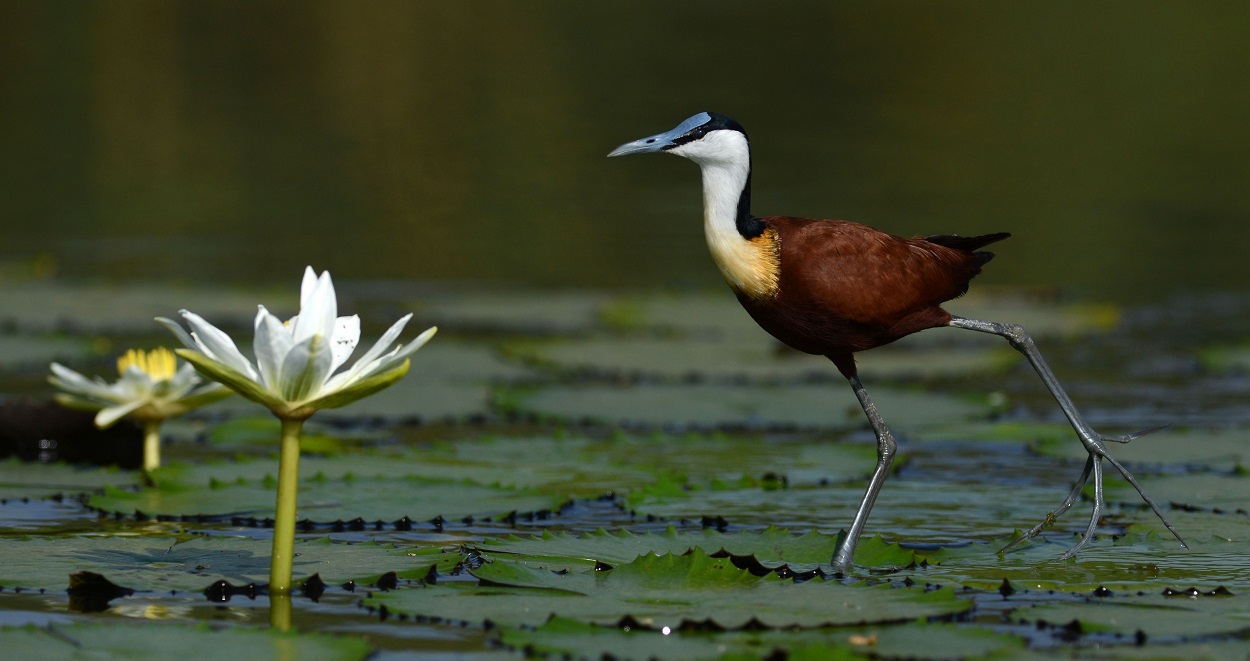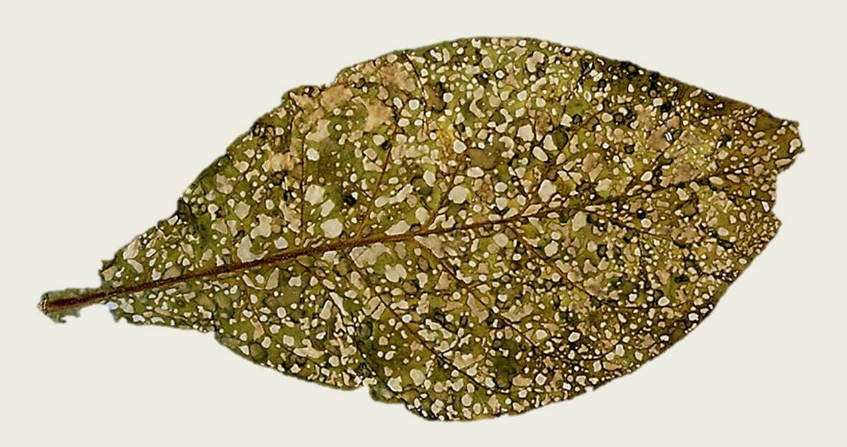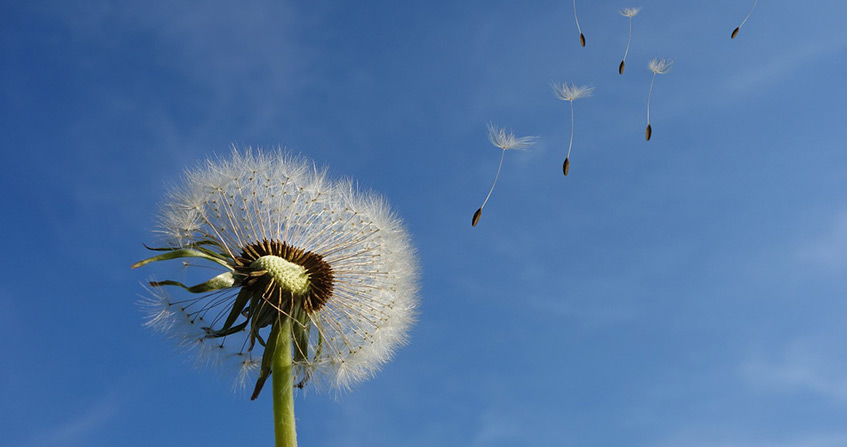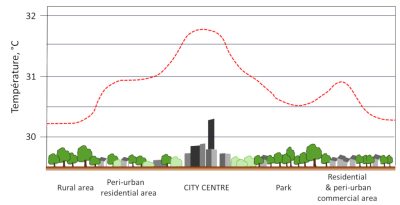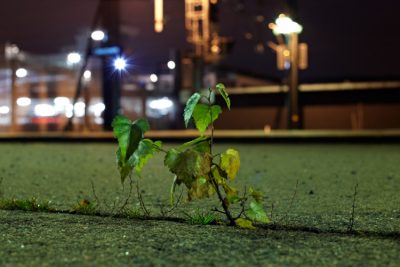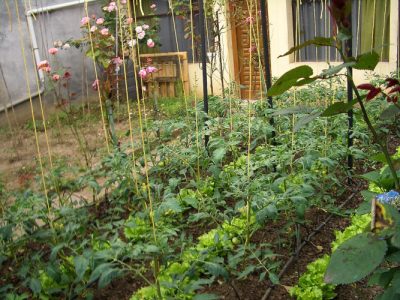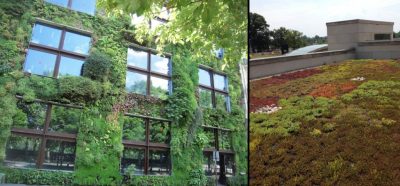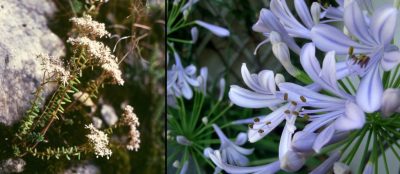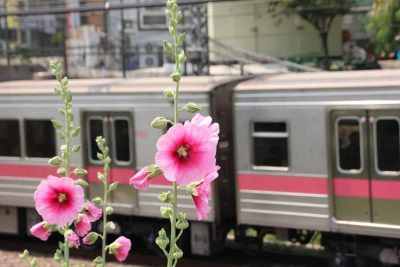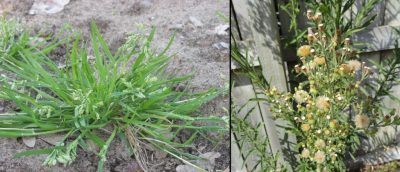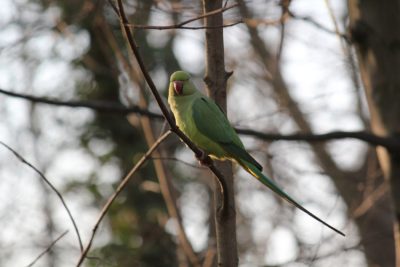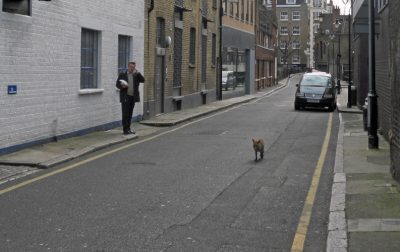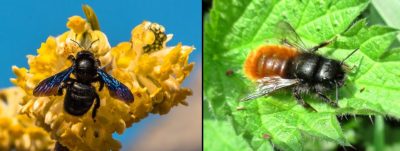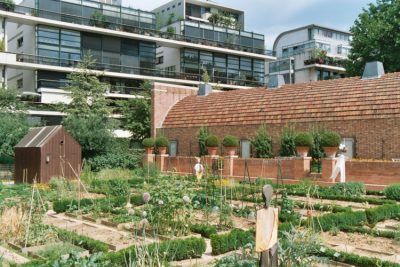What biodiversity in the city ?
PDF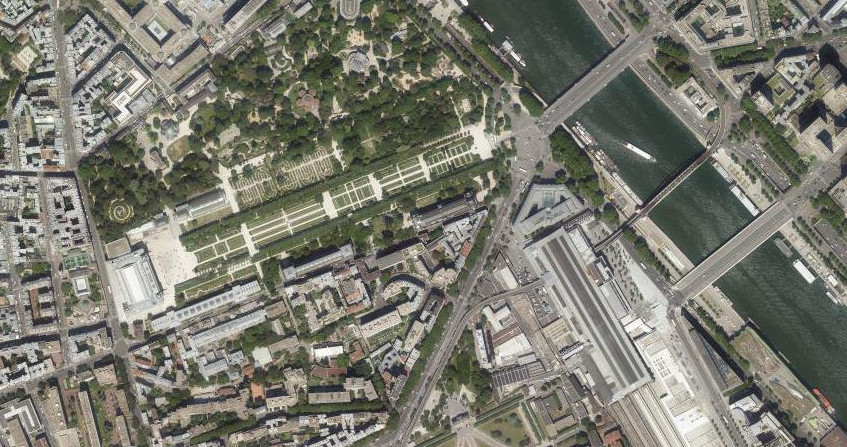
Even if the urban environment imposes very strong constraints on the animals and plants that inhabit it, the biodiversity of our cities is rich in many diverse species. All these species form the urban ecosystem that provides valuable services to urban dwellers. We still need to make cities welcoming for fauna and flora.
1. The city, a place where many animal and plant species live
A city is an environment where a large human population is concentrated and which organizes its space according to needs and activities. The ecological characteristics of cities are quite particular due to the concentration of buildings of all kinds and the importance of human activities. In reality, these characteristics may vary according to the density of human populations, the geographical location and the type of activity (city centre, peri-urban districts, etc.). Nevertheless, the human presence is still more significant than in rural areas.
What are the consequences of the high human concentration in cities? Areas likely to support biodiversity are very small in size, and surrounded by buildings, streets, walls, structures that do not suit the lifestyle of a number of species because they cannot find food or shelter there… In fact, the isolation of these areas, within an inhospitable urban matrix, prevents most organisms from migrating from one area to another. The consequence of this isolation is a loss of viability of plant or animal populations through genetic impoverishment and inbreeding.
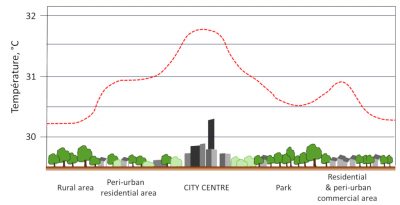
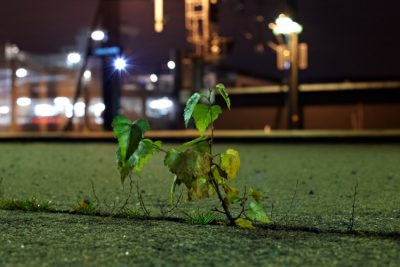
Other sources of pollution are light and noise pollution that cause serious damage to sensitive species (see What is the ecological impact of light pollution?). An example is bats, whose behaviour changes because of artificial light at night. Some very common species hunt insects attracted to the halos of streetlights. Other more rare species are very frightened and flee the cities for better preserved spaces.
In addition to the abiotic characteristics of the urban environment mentioned above, urban sites are subject to strong direct pressures due to the high concentration of urban dwellers on small areas: the soils are trampled and compacted. The concentration of animal and plant species in small areas leads them to more intense relationships, whether they are predation, competition, facilitation,… Epidemics are more violent and serious even if the microorganisms are less diversified in the city centre.
2. Why preserve biodiversity in the city?
The growing literature on the subject clearly shows that the quality of life of urban dwellers and even their health is closely linked to the quality of biodiversity in the neighbourhoods in which they live.
Through the services they provide, urban plants help to improve the quality of air, water and soil. Trees in particular absorb significant amounts of pollutants. They play a significant role in the carbon cycle and have a significant impact on neighbourhood temperatures, especially in the event of severe heat waves. Indeed, the water taken by the roots of the trees and circulating (the sap) to the leaves evaporates thanks to the stomata. This conversion of liquid water into water vapour (evapotranspiration), which uses large amounts of solar energy [1], has a particularly appreciable local cooling effect during the summer months.
Nature in the urban environment provides psychological and physical benefits for urban dwellers when they live in neighbourhoods rich in green space. This is why many cities set up many parks or squares, so that each city dweller has a public garden within walking distance. Studies show that in greener neighbourhoods, urbanites are less prone to allergies, cardiovascular disease… Indeed, these spaces improve local air quality and their pleasant landscaping encourages residents to use them for walking or playing sports. As a result, they have a positive impact on the health of city dwellers.
Urban biodiversity also has cultural and educational virtues. It provides an opportunity to raise awareness of environmental issues among a wide audience, starting with children. A large proportion of small urban dwellers are in contact with nature only in the areas around their homes. The growing interest in associative initiatives whose objective is to show the nature of cities (nature festivals and other events around biodiversity for example) or the success of certain participatory science programmes (see focus on Participatory sciences) whose objective is to collect data on the functioning of biodiversity in cities (Sauvage de ma rue [2], Lichen go [3], garden biodiversity…) demonstrates the importance in preserving green spaces in the most central districts.
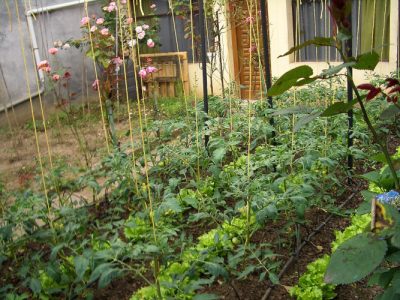
In addition to these purely utilitarian arguments, preserving nature in cities means preserving part of the biodiversity of certain regions. Indeed, since urban territories are becoming increasingly large and urban sprawl sometimes takes place in areas rich in fauna and flora, preserving urban biodiversity is potentially a way to preserve certain species. Some examples found in the literature: very rare plants grow around Perth Airport in Australia [4] or a beautiful population of a lizard that is declining sharply throughout its range, lives on a greenway in Oklahoma City, USA [5].
Similarly, the preservation of areas dedicated to biodiversity in cities allows them to act as corridors for fauna and flora, continuous or discontinuous for species likely to cross the city from peri-urban populations. In Brisbane, Australia, this is the case of a marsupial who occupies urban sites as soon as they are connected, even episodically, to populations on the fringes of the city.
3. What species in the city?
The major taxonomic groups are almost all represented in the city. As in many other terrestrial ecosystems, aquatic species suffer most from developments that are often at the expense of wetlands. For example, amphibians are often at high risk in urban areas. Otherwise, plants, herbivores or phytophages, carnivores may be found in cities. Apart from trees that have a special status, urban animal and plant organisms are of modest size. In French metropolitan cities, the largest animals are domestic or in captivity.
3.1. Cultivated and domestic species
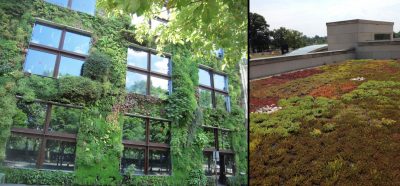
Species come from a variety of geographical regions. Some are local, they have been part of the flora of our country for several hundred years, white stoneware (Sedum album L.) for example is used to green some roofs (Figure 5). Many others are exotic. The agapanthus (Agapanthus praecox Willd.), for example, which flowers nicely in many gardens, comes from South Africa (Figure 5).
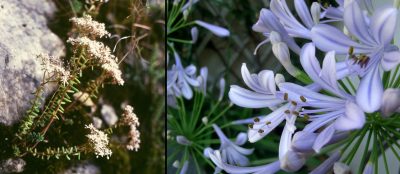
Urban forests sequester some of the greenhouse gases, including CO2, and produce oxygen owing to photosynthesis. They purify a fraction of air pollution, particulate and gaseous (CO, NOX and NO2, and some non-biodegradable toxic substances for example). Finally, the tree enriches the soil with bacteria and fungi that degrade complex organic pollutants (some pesticides, PAHs, organochlorines, etc.). Increasing the number of urban trees, and greening cities leads to a reduction in pollution.
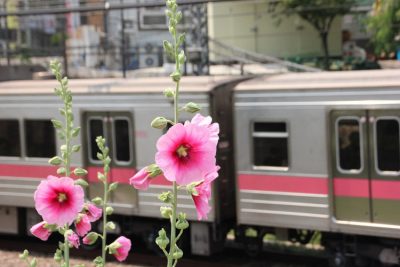
Whether animal or plant, domesticated species are likely to establish and prosper in the urban environment. Examples include hollyhocks (Alcea rosea L., Figure 6) escaping from gardens or Florida turtles (Trachemys scripta) released into the urban wilderness, which can be found outside areas where they have been raised or cultivated.
3.2. Wild species on my street
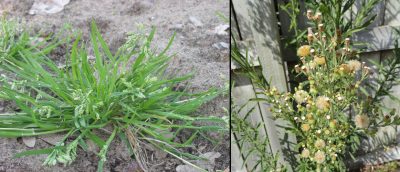
The most threatened are wetland plants that have been largely drained during the urbanization phases. Some ferns in particular are protected because they are becoming scarce in the city.
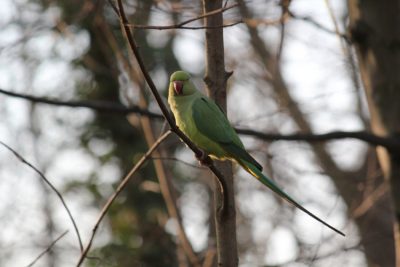
On the wildlife side, the most visible are birds. Several dozen species populate our cities. House sparrows, blue tit, common starling, blackbird and black swift are among the most common species. Some species are exotic, such as the beetle pigeon or the collared parakeet (Figure 8). In the urban environment, adapted birds find nesting places and abundant feeding resources, so the abundances observed can be very high. The house sparrow remains common in the city. Its decline is mainly documented in rural areas. The window swallow finds its main nesting habitat in Western Europe in the city. In winter, the city loses some migratory species but also gains some non-breeding species such as alder tarin, which come to seek food and heat.
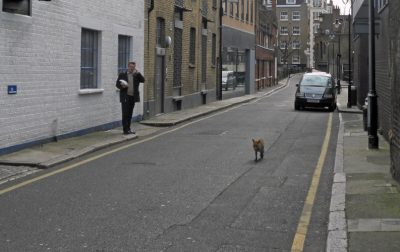
As far as urban mammals are concerned, there are only about ten species. In our highly urbanised European cities, the last references to large mammals, carnivores or herbivores, wolves, deer, etc. date back several centuries, even if wild boars are increasingly reported in some outlying districts. Hedgehogs, moles, martens, squirrels, rats and mice, rabbits or foxes (Figure 9) and some species of bats are about the only mammals found in urban centres. While most thrive thanks to a very adapted lifestyle (prolific reproduction, night life…), others suffer from too difficult conditions. Hedgehogs in particular are in sharp decline due to the increasing scarcity of insect or gastropod species on which they feed, killed by insecticides or slug pellets. Fencing between gardens in increasingly large urban areas that prevent genetic exchanges between populations, as well as deadly encounters with vehicles on the road, make them a highly threatened species.
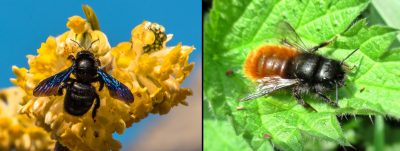
Many insect species are poorly perceived by urban dwellers, such as bed bugs, food mites or cockroaches. These species find in the human way of life the ideal conditions for proliferation.
4. Welcoming more effectively biodiversity in cities?
The most important factor that governs the quality of biodiversity is the place it is given: vast green spaces, many gardens, connected to each other by vegetalized structures within the urban matrix. Buildings and other artificial surfaces can support vegetation as long as the planting was planned at the time of construction.
Management must be diversified according to spaces and uses. Pesticides must be banned for their toxicity to biodiversity and dangerous to the health of urban dwellers. Mowing and pulling up must be spaced out over time to allow the species to complete their life cycle.
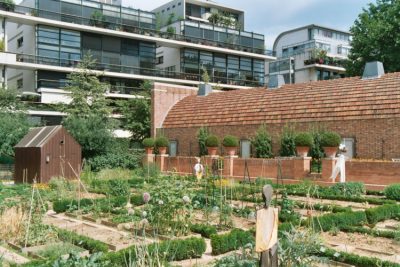
Nevertheless, as part of climate change, our regions are increasingly subject to catastrophic events, floods, storms or heat waves (see Extreme Weather Events and Climate Change). It is by implementing effective urban renaturation policies that cities will have a chance to escape the worst. The abandonment of chemicals in public spaces is already beginning to yield results, since at the beginning of the 21st century, the urban environment is the only terrestrial environment that is seeing its biodiversity increase (Figure 11).
5. Messages to remember
- The ecological characteristics of cities are quite particular due to the concentration of buildings of all kinds and the importance of human activities.
- In cities, the areas likely to host biodiversity are very small in area, and isolated from each other by buildings. It is hot and dry. The air, water and soil are more polluted than elsewhere.
- Nevertheless, there is sometimes an abundant biodiversity in the city, depending on the quality of the management and configuration of the city. Cultivated or domesticated animals and plants live alongside wild species.
- The quality of biodiversity depends on the place it is given and the management applied to it. But in return, it provides city dwellers with many services and benefits that are essential to their quality of life and health.
References and notes
Cover image. Aerial view of Paris above the “Jardin des Plantes”. Urban green spaces contain a large part of the biodiversity of cities. Waterways or tree lines can provide ecological corridors for some animal and plant species. [Source: screenshot Géoportail © IGN]
[1] A large tree can evaporate hundreds of litres of water vapour, using 0.7 kWh/L of energy to convert liquid water into vapour.
[2] http://sauvagesdemarue.mnhn.fr/
[3] http://www.particitae.upmc.fr/fr/participez/suivez-les-lichens.html
[4] Close DC, Messina G, Krauss SL, Rokich DP, Stritzke J & Dixon KW (2006) Conservation biology of the rare species Conospermum undulatum and Macarthuria keigheryi in an urban bushland remnant. Australian Journal of Botany 54(6) 583-593
[5] Endriss DA, Hellgren EC, Fox SF & Moody RW (2007) Demography of an urban population of the Texas horned lizard (Phrynosoma cohnutum) in central Oklahoma. Herpetologica 63:320-331
The Encyclopedia of the Environment by the Association des Encyclopédies de l'Environnement et de l'Énergie (www.a3e.fr), contractually linked to the University of Grenoble Alpes and Grenoble INP, and sponsored by the French Academy of Sciences.
To cite this article: MACHON Nathalie (August 15, 2019), What biodiversity in the city ?, Encyclopedia of the Environment, Accessed December 30, 2024 [online ISSN 2555-0950] url : https://www.encyclopedie-environnement.org/en/life/what-biodiversity-in-the-city/.
The articles in the Encyclopedia of the Environment are made available under the terms of the Creative Commons BY-NC-SA license, which authorizes reproduction subject to: citing the source, not making commercial use of them, sharing identical initial conditions, reproducing at each reuse or distribution the mention of this Creative Commons BY-NC-SA license.





